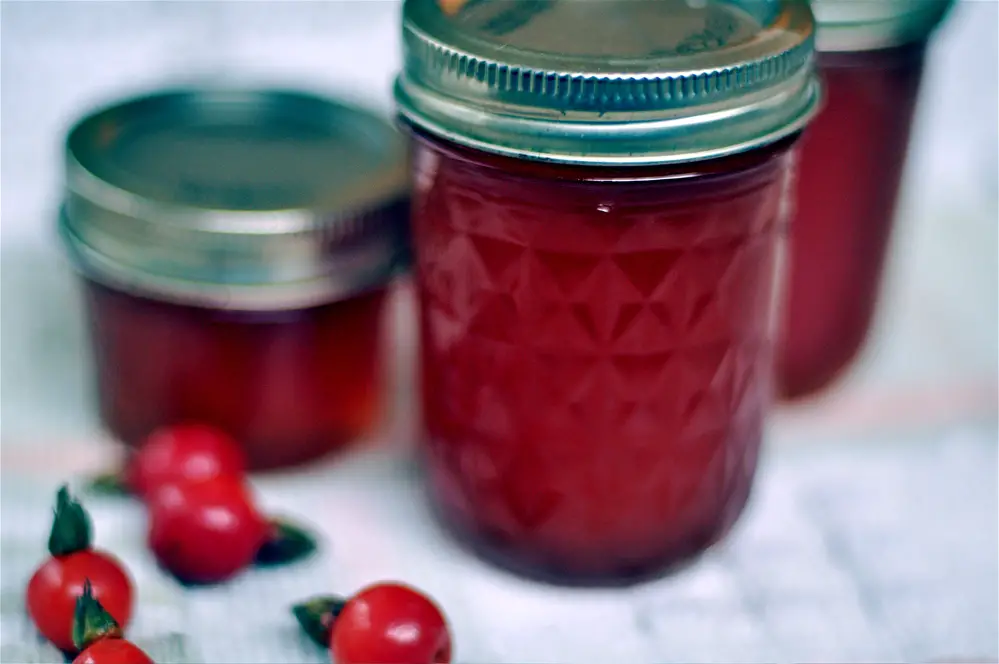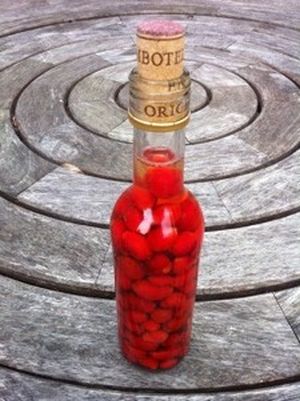What To Do With Rosehips – Jelly and Vinegar
As we said in a previous article dedicated to rosehip syrup and its properties, the little bright red fruits are a genuine vitamin C natural storehouse, containing as much as 20 times more vitamin C than oranges. For this reason, rosehips play a huge role in our health and, consequently, they need to be preserved and kept within reach in various forms. Below is what to do with rosehips so that we always have this enormous source of health close to us, with many recipes to come as the rosehip picking season is drawing close.
We will not insist on the syrup recipe again and we will set our eyes on two popular recipes showing you how to make rosehip jelly and rosehip vinegar. For the first recipe you need 6 cups rose hips, 4 cups water, 2 1/2 cups sugar, 1/2 packet pectin, 1/3 cup lemon juice (1 lemon) and 3 to 4 8-oz canning jars. After washing and stemming the rosehips, put them in a stainless steel pot and cover with the 4 cups of water. Simmer for about an hour until the rosehips turn soft and can be easily mashed with a potato masher.
Once mashed, strain the liquid left in the pot. After the liquid passed through, take the remaining mash, put it in a cheese cloth and squeeze out the juice. The point is to extract as much juice and as little pulp as possible. Return the juice and the mashed rosehips to the pot, add the lemon juice and pectin and bring to a boil. Add sugar and continue to boil for a minute or so while stirring. Remove from heat, skim off any foam, and immediately ladle into sterilized jars. Secure lids and process jars in hot bath for 10 minutes.

What to do with rosehips – jelly
If you are a big fan of salads and you should be given the unhealthy processed food we all eat, then make yourselves a rosehip vinegar which will give salads a special taste. You only need a couple of bottles, rosehips and white wine vinegar. It is recommended you use rosehips picked after the first frost. If picked before, you can also freeze the fruit and then defrost and use for a similar effect.
Then top and tail them and pierce each one numerous times with a pin. You do not want to crush them as the hairs inside the hips are highly irritant to your throat and gut, and must not be consumed. Next pop them in your bottle until it is full, then pour on cold white wine vinegar. Cap and place in a cupboard for around 6-8 weeks, giving them a good shake occasionally. Use old bottles and corks for a traditional look.

What to do with rosehips – vinegar
Sources: Fat-of-the-land.blogspot.it, Eatweeds.co.uk















